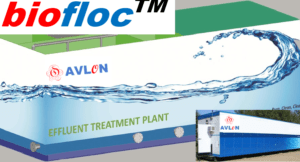Water treatment manufacturers
Water treatment manufacturers ideally have a laboratory infrastructure established which will enable all samples to be returned to a central or regional laboratory within a few hours of being taken. However, this depends on the availability of a good road system and of reliable motorized transport for all sampling officers, and these are not available in many countries. Thus, although it may be possible to establish well-equipped central and even regional laboratories for water analysis, at the provincial and district levels it may be necessary to rely on a relatively small number of simple tests.
Water treatment manufacturers, Avlon Inc, – A Filipino company
Package Sewage Treatment Plant / Waste Water Treatment Plant manufactures
Guaranteed: DENR RA 9275 Clean Water Act – DAO 2016-08 Standard. Low cost, less footprint, less civil works, less operating expenses, easy to operate modular plug and play system
Visit of website for more details or quotation. www.avlon-php.com

Water treatment manufacturers the most important factor to take into account is that, in most communities, the principal risk to human health derives from faecal contamination. In some countries there may also be hazards associated with specific chemical contaminants such as fluoride or arsenic, but the levels of these substances are unlikely to change significantly with time. Thus, if a full range of chemical analyses is undertaken on new water sources and repeated thereafter at fairly long intervals, chemical contaminants are unlikely to present an unrecognized hazard. In contrast, the potential for faecal contamination in untreated or inadequately treated community supplies is always present. The minimum level of analysis should therefore include testing for indicators of faecal pollution (thermotolerant (faecal) coliforms), turbidity, and chlorine residual and pH (if the water is disinfected with chlorine).
Water treatment manufacturers even in developing countries poorly served by roads and transportation, it is usually possible to devise a rational sampling and analytical strategy. This should incorporate carefully selected critical-parameter tests in remote (usually rural) locations using simple methods and portable water-testing equipment (see pp. 65–66) where appropriate. Wherever possible the community should be involved in the sampling process. Where water is disinfected, primary health workers, schoolteachers, and sometimes community members can be trained to carry out simple chlorine residual testing. The same people could also collect samples for physicochemical analysis and arrange for their delivery to the regional laboratory. The use of community members in this way has significant implications for training and supervision but would be one way of ensuring more complete surveillance coverage.
Sampling
The guidelines provided here take into account experience in surveillance programmes in remote, typically rural, areas and in periurban communities.
Location of sampling points
Water treatment manufacturers one of the objective of surveillance is to assess the quality of the water supplied by the supply agency and of that at the point of use, so that samples of both should be taken. Any significant difference between the two has important implications for remedial strategies. Samples must be taken from locations that are representative of the water source, treatment plant, storage facilities, distribution network, points at which water is delivered to the consumer, and points of use.
Sampling frequency
The most important tests used in water-quality surveillance or quality control in small communities are those for microbiological quality (by the measurement of indicator bacteria) and turbidity, and for free chlorine residual and pH where chlorination is used. These tests should be carried out whenever a sample is taken, regardless of how many other physical or chemical variables are to be measured.
Storage of samples for microbiological analysis
Although recommendations vary, the time between sample collection and analysis should, in general, not exceed 6 hours, and 24 hours is considered the absolute maximum. It is assumed that the samples are immediately placed in a lightproof insulated box containing melting ice or ice-packs with water to ensure rapid cooling. If ice is not available, the transportation time must not exceed 2 hours. It is imperative that samples are kept in the dark and that cooling is rapid. If these conditions are not met, the samples should be discarded. When water that contains or may contain even traces of chlorine is sampled, the chlorine must be inactivated. If it is not, microbes may be killed during transit and an erroneous result will be obtained.
Sampling methods for physicochemical analysis
Results of physicochemical analysis are of no value if the samples tested are not properly collected and stored. This has important consequences for sampling regimes, sampling procedures, and methods of sample preservation and storage. In general, the time between sampling and analysis should be kept to a minimum. Storage in glass or polyethylene bottles at a low temperature (e.g. 4°C) in the dark is recommended. Sample bottles must be clean but need not be sterile. Special preservatives may be required for some analytes. Residual chlorine, pH, and turbidity should be tested immediately after sampling as they will change during storage and transport.






